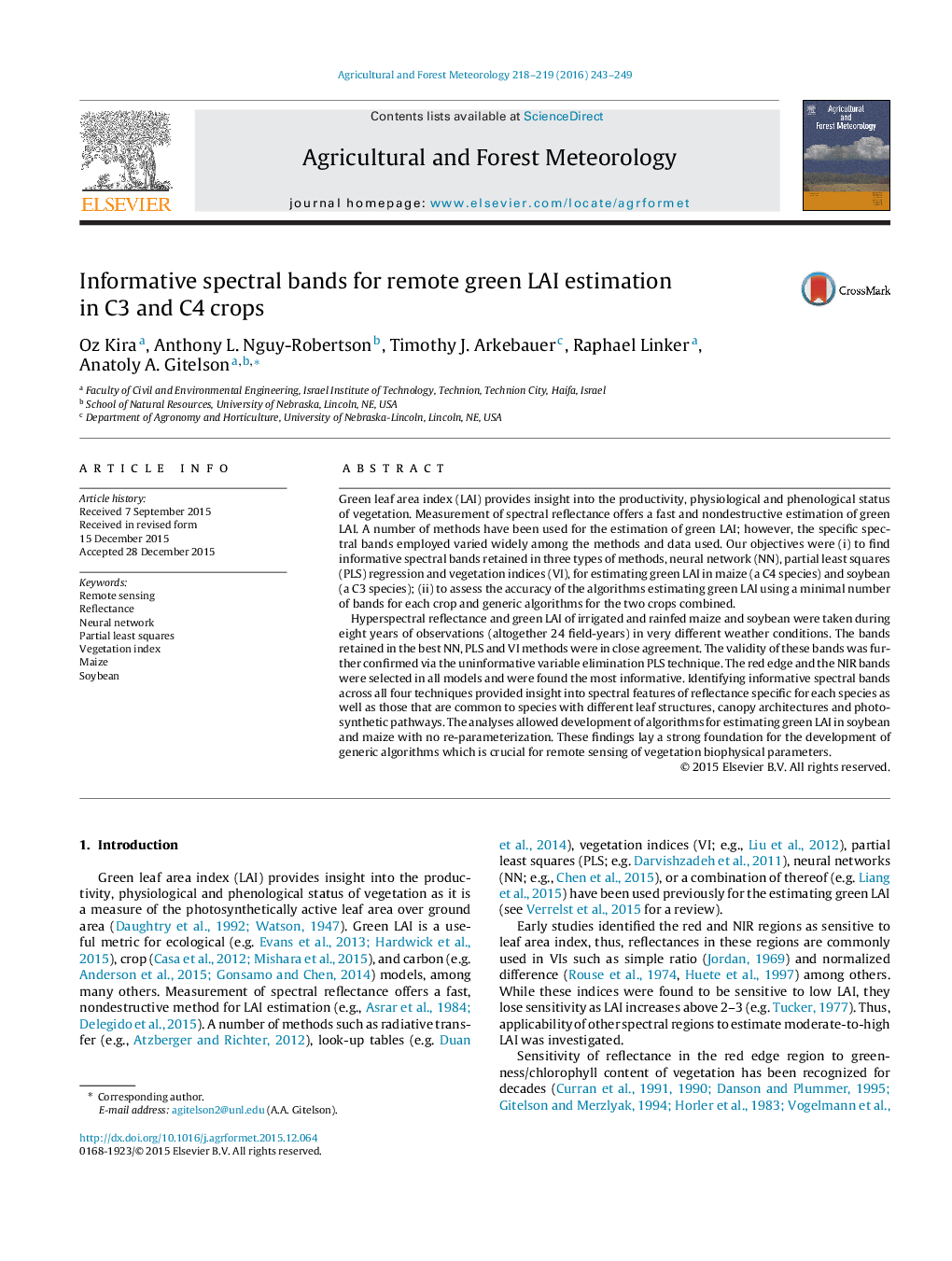| Article ID | Journal | Published Year | Pages | File Type |
|---|---|---|---|---|
| 6537071 | Agricultural and Forest Meteorology | 2016 | 7 Pages |
Abstract
Hyperspectral reflectance and green LAI of irrigated and rainfed maize and soybean were taken during eight years of observations (altogether 24 field-years) in very different weather conditions. The bands retained in the best NN, PLS and VI methods were in close agreement. The validity of these bands was further confirmed via the uninformative variable elimination PLS technique. The red edge and the NIR bands were selected in all models and were found the most informative. Identifying informative spectral bands across all four techniques provided insight into spectral features of reflectance specific for each species as well as those that are common to species with different leaf structures, canopy architectures and photosynthetic pathways. The analyses allowed development of algorithms for estimating green LAI in soybean and maize with no re-parameterization. These findings lay a strong foundation for the development of generic algorithms which is crucial for remote sensing of vegetation biophysical parameters.
Related Topics
Physical Sciences and Engineering
Earth and Planetary Sciences
Atmospheric Science
Authors
Oz Kira, Anthony L. Nguy-Robertson, Timothy J. Arkebauer, Raphael Linker, Anatoly A. Gitelson,
